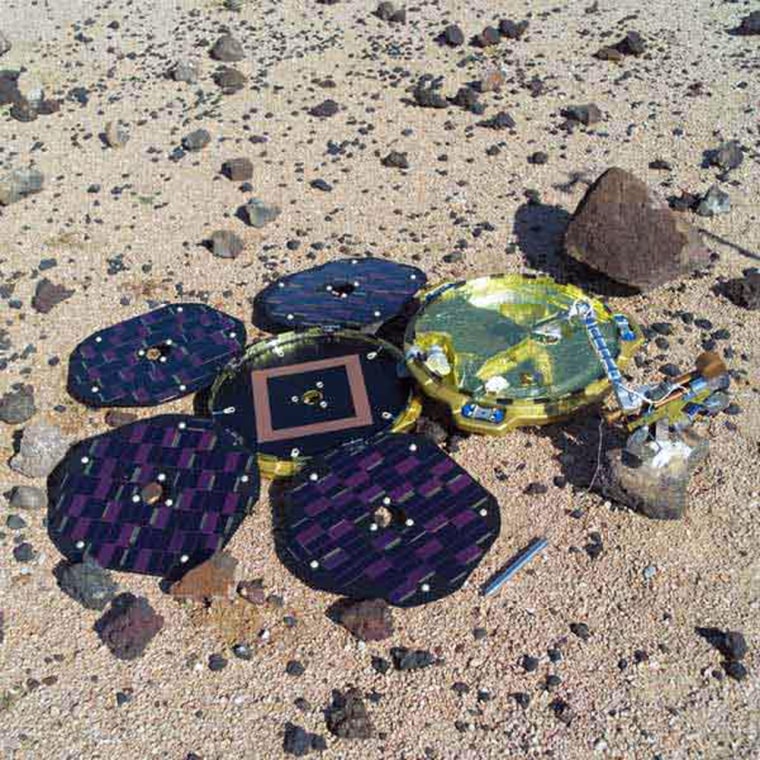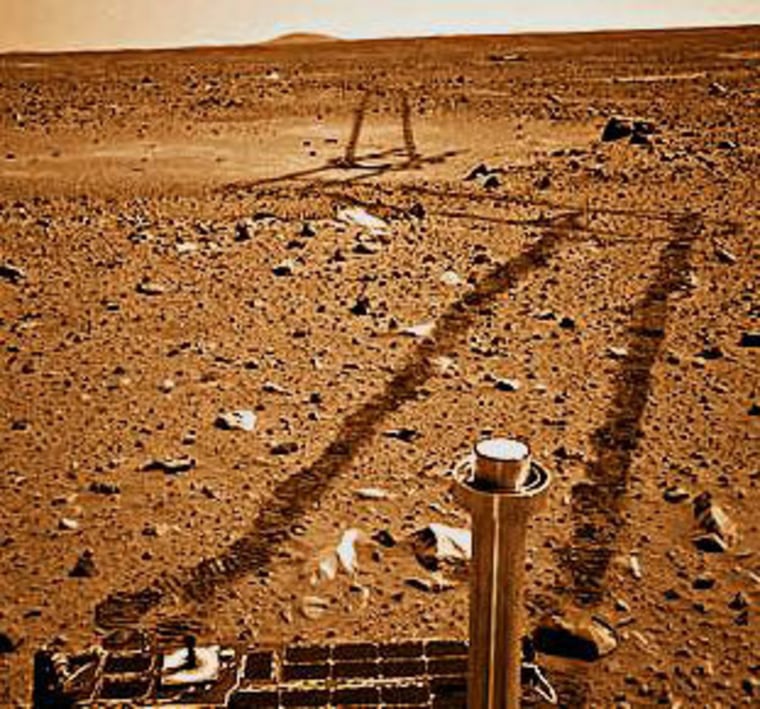Many space missions use robots to explore. The rovers Spirit and Opportunity are still travelling around Mars, taking pictures and digging in the dirt. But could a robot identify alien life? How would a machine know the difference, for instance, between a rock and bacteria?
Hoping to answer this question, a group of scientists led by Derek Pullan of the University of Leicester used robotic explorer instruments to examine rocks here on Earth. To make their tests as realistic as possible, the researchers collected rock samples similar to what we'd find on Mars and then studied them with high-tech equipment. The instruments — which included a camera, microscope, and sampling device — were very similar to those carried on the lost Beagle 2 probe.
The idea was to see if the instruments could detect signs of living creatures in the rocks. Although the tests were carried out in a lab, the scientists made the conditions as close as possible to those experienced by probes on the Martian surface.
All of the instruments tested were good at finding signs of life. The interesting result is that they were much better when used together. This shows how important it is to not cut corners when building robotic explorers. To get the whole picture you need a wide variety of instruments working together.
The Beagle 2-style microscope was found to be particularly good, showing that low-budget equipment can be as effective as expensive options. The team also got useful data about how close in proximity to a sample rock particular instruments should be in order to spot signs of life.
So why is this research important? Space exploration may be exciting but it's also dangerous and expensive, which is why robotic probes are sent instead of people. But the problem with robots is they must be light and compact in order to fit easily into a rocket. They also must be energy efficient, since their power is mostly generated from solar panels. This combines to make designing instruments for them very difficult.

For example, you might think that a robot exploring Mars should have the most powerful microscope available. That's probably not possible as everything must be low-weight, small in size, need little power and also be very tough. Clearly instrument engineers have a hard job, and the scientists wanted to see whether the current equipment is up to the task.
More studies like this are planned for field experiments and sample preparation, as part of the Planetary Analogue Field Studies Network. The research is useful not only for instrument designers, but also for mission engineers and planetary scientists.
The team plans to do further tests with different equipment, building up a database that will show which instruments are best in any given situation. It all goes toward helping make future missions to Mars as effective as possible. Indeed, if we do find life on another planet, the discovery will be likely made by a machine and not a human.
The research is detailed in a February issue of the journal Astrobiology.
